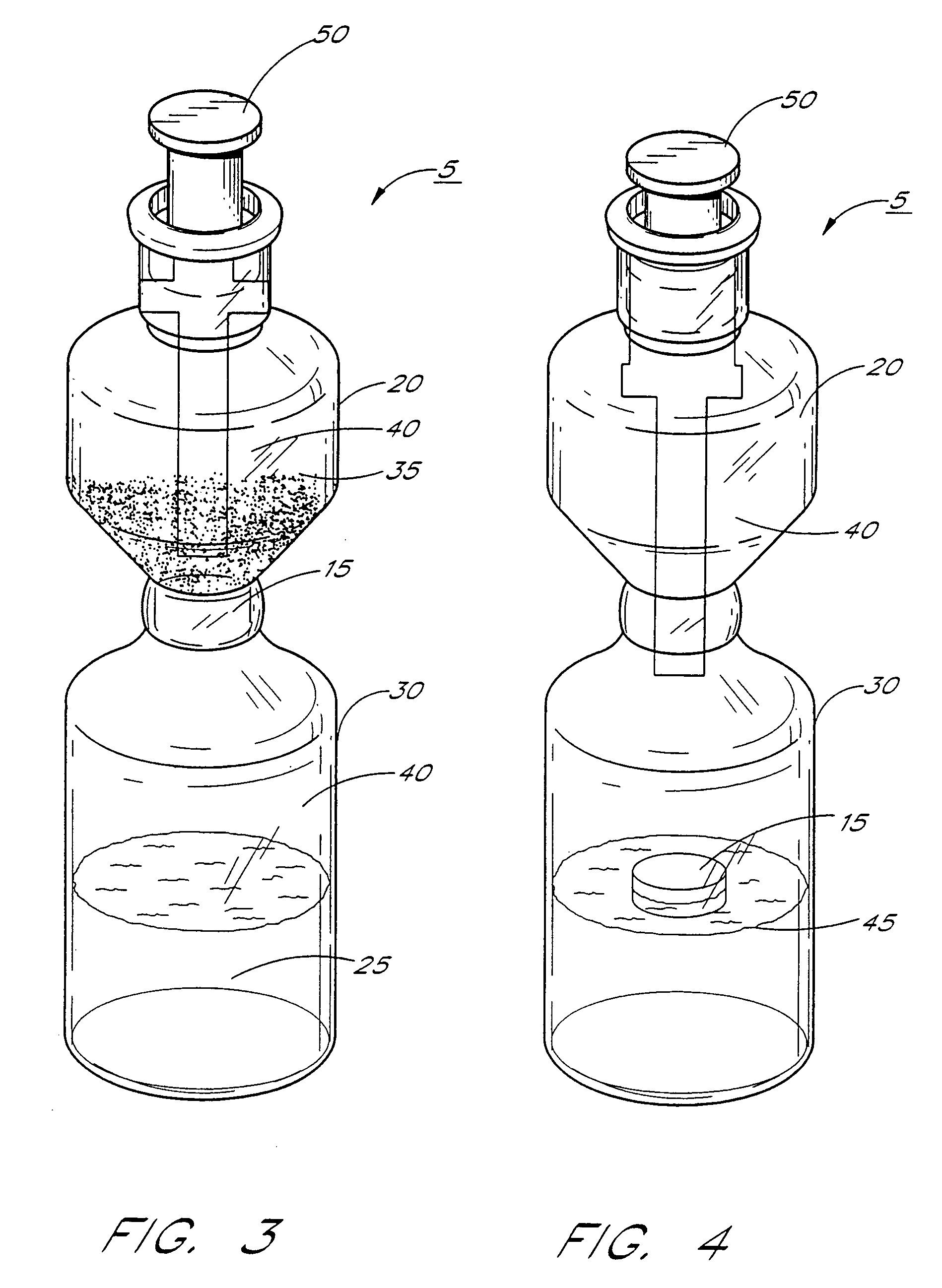Stabilized gas emulsion containing phospholipid for ultrasound contrast enhancement
a technology of ultrasound contrast enhancement and stabilized gas, which is applied in the field of stabilized gas emulsion containing phospholipid for ultrasound contrast enhancement, can solve the problems of inability to provide contrast enhancement that lasts even a few seconds, let alone minutes, and the use of extremely expensive equipment. , to achieve the effect of prolonging the life of the emulsion
- Summary
- Abstract
- Description
- Claims
- Application Information
AI Technical Summary
Benefits of technology
Problems solved by technology
Method used
Image
Examples
example i
Spray Drying of Phospholipid-Containing Solution
[0103]One liter of the following solution was prepared in water for injection: 2.0% w / v Maltrin M-100 maltodextrin (Grain Processing Corp. Muscatine, Iowa), 0.95% w / v sodium chloride (Mallinckrodt, St. Louis, Mo.), 1.0% Superonic F-68 (Serva, Heidelberg, Germany), 1.0% w / v Ryoto Sucrose Stearate S-1670 (Mitsubishi-Kasei Food Corp., Tokyo, Japan), and 0.5% Lipoid E-100-3 hydrogenated phospholipid (Lipoid, Ludwigshafen, Germany).
[0104]This solution was then spray dried in a Niro Atomizer Portable Spray Dryer equipped with a two fluid atomizer (Niro Atomizer, Copenhagen, Denmark) employing the following settings:
[0105]
hot air flow rate39.5 CFMinlet air temp. 245° C.outlet air temp. 100° C.atomizer air flow 350 liters / minliquid feed rate 1 liter / hr
[0106]The dry, hollow spherical product had a diameter between about 1 μM and about 15 μM and was collected at the cyclone separator as is standard for this dryer. Aliquots of powder (250 mg) we...
example ii
Comparison of Phospholipid vs. Sucrose Ester Gas Emulsions
[0108]One liter of each of the following four solutions was prepared with water for injection:
[0109]Solution 1:[0110]3.9% w / v m-HES hydroxyethylstarch (Ajinimoto, Tokyo, Japan)[0111]3.25% w / v Sodium chloride (Mallinckrodt, St. Louis, Mo.)[0112]2.83% Sodium phosphate, dibasic (Mallinckrodt, St. Louis, Mo.)[0113]0.42% w / v Sodium phosphate, monobasic (Mallinckrodt, St. Louis, Mo.)
[0114]Solution 2:[0115]2.11% w / v Poloxamer 188 (BASF, Parsipany, N.J.)[0116]0.32% w / v Ryoto Sucrose Stearate S-1670 (Mitsubishi-Kasei Food Corp., Tokyo, Japan)[0117]0.16% w / v Ryoto Sucrose Stearate S-570 (Mitsubishi-Kasei Food Corp., Tokyo, Japan)
[0118]Solution 3:[0119]3.6% w / v m-HES hydroxyethylstarch (Ajinimoto, Tokyo, Japan)[0120]3.0% w / v Sodium chloride (Mallinckrodt, St. Louis, Mo.)[0121]2.6% Sodium phosphate, dibasic (Mallinckrodt, St. Louis, Mo.)[0122]0.39% w / v Sodium phosphate, monobasic (Mallinckrodt, St. Louis, Mo.)
[0123]Solution 4:[0124]0.15%...
example iii
Comparison of Water Insoluble Phospholipid vs. Water Insoluble Phospholipid / Water Soluble Surfactant (Poloxamer 188) Microbubbles
[0131]One liter of each of the following emulsions was prepared for spray drying as described in Example II:
[0132]Formulation A: Water Insoluble Phospholipid Formulation[0133]3.6% w / v m-HES hydroxyethylstarch (Ajinimoto, Tokyo, Japan)[0134]3.0% w / v Sodium chloride (Mallinckrodt, St. Louis, Mo.)[0135]2.6% w / v Sodium phosphate, dibasic (Mallinckrodt, St. Louis, Mo.)[0136]0.39% w / v Sodium phosphate, monobasic (Mallinckrodt, St. Louis, Mo.)[0137]0.45% w / v Hydrogenated Egg Phospholipids E PC 3, (Lipoid, Ludwigshafen, Germany)[0138]3.0% v / v 1,1,2-Trichlorotrifluoroethane (Freon 113; EM Science, Gibbstown, N.J.)
[0139]Formulation B: Water Insoluble Phospholipid / Water Soluble (Poloxamer 188) Formulation[0140]3.6% w / v m-HES hydroxyethylstarch (Ajinimoto, Tokyo, Japan)[0141]3.0% w / v Sodium chloride (Mallinckrodt, St. Louis, Mo.)[0142]2.6% w / v Sodium phosphate, dibasi...
PUM
 Login to View More
Login to View More Abstract
Description
Claims
Application Information
 Login to View More
Login to View More - R&D
- Intellectual Property
- Life Sciences
- Materials
- Tech Scout
- Unparalleled Data Quality
- Higher Quality Content
- 60% Fewer Hallucinations
Browse by: Latest US Patents, China's latest patents, Technical Efficacy Thesaurus, Application Domain, Technology Topic, Popular Technical Reports.
© 2025 PatSnap. All rights reserved.Legal|Privacy policy|Modern Slavery Act Transparency Statement|Sitemap|About US| Contact US: help@patsnap.com


